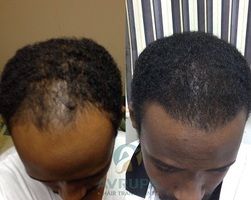
Like all the surgical and medical interventions, hair transplant has undergone several developments and technical improvements.
Development of Hair Transplant Techniques
In 1822, a German doctor came up with the idea of restoring animal’s hair with fur and feathers.
The idea developed until about 1950 when two American doctors began to perform hair restoration surgeries.
The idea became very popular and began to evolve until it reached its current form.
The first hair transplant technique to be used by surgeons was the FUT (Follicular Unit Transplant).
The method was basically performed by removing thin strip tissue from the back side of the scalp (donor site).
Years later an Australian doctor introduced a new idea of directly extracting the hair follicles from the scalp.
By using a tiny punch with different diameters ranging between (0, 8 - 1 mm).
This technique was given the name FUE (Follicular Unit Extraction).
The majority of hair transplant surgeons now apply this technique as it promises admirable outcomes with high success rates.
How is the FUE hair transplant performed?
FUE hair transplant was first done manually using an FUE-Punch. The surgeon or medical staff spins the punch which contains cylindrical blades to manually extract the follicles.
Step (1): Follicle Extraction
As the FUE evolved it is now done using a micro motorized device called the Micro-Motor.
The hair grafts are carefully extracted from the donor area one by one. Follicles could contain a group of 1, 2, 3 or 4 hairs.
Step (2): Follicles Grouping
Then the grafts are sorted into groups according to the structure and number of hair strands it contains.
Step (3) Opening Channels or Incisions
A highly skilled hair transplant surgeon creates incisions that mimic the size of the follicles with a certain depth.
This is a very significant step as it determines the natural appearance and the right direction of the hair.
Step (4) Follicle Implantation
After hair follicles are extracted and incisions are opened. It’s time to insert them in the recipient sites if baldness
and hair thinning area
Important Note!
The transplanted hair when taken from the safe donor area, it never falls. The newly implanted hair holds the same characteristics of the hair in the donor area.
It remains resistant to the hormone causing hair loss, which is known as DHT hormone.






Share Your Opinion, Please